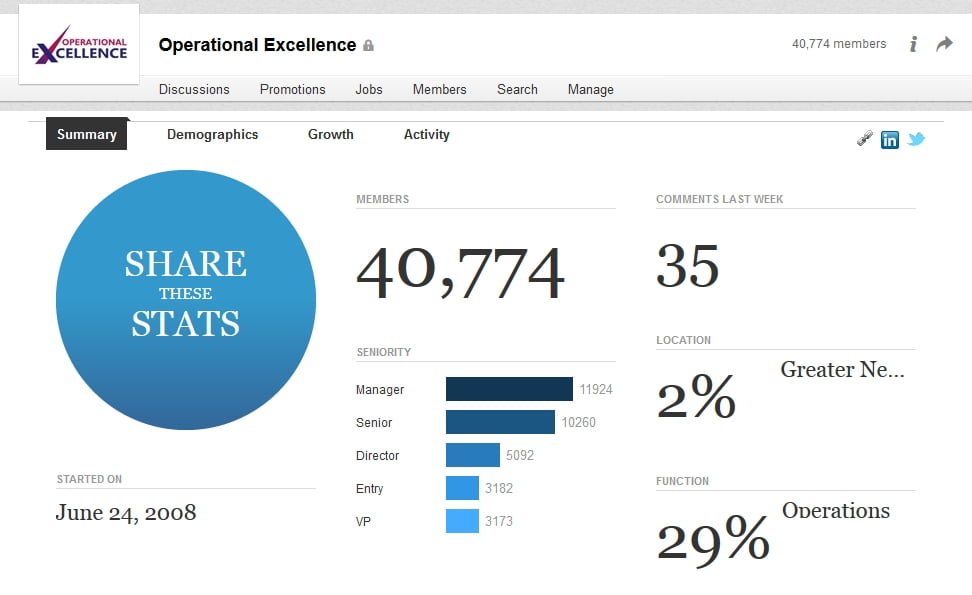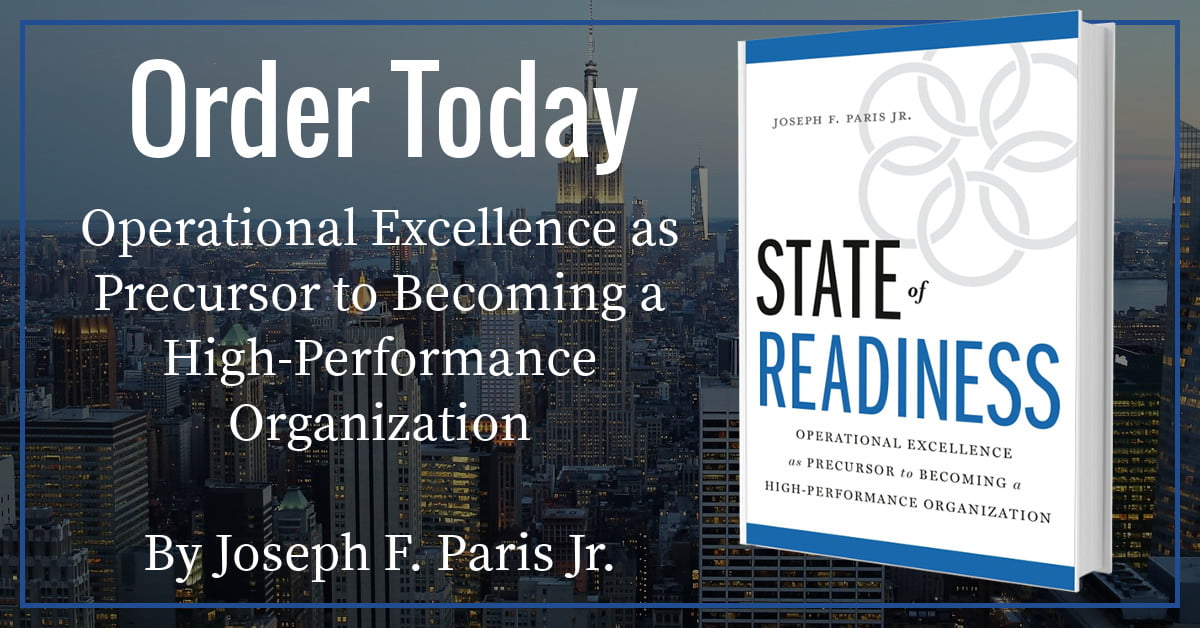Government; Has the need but lacks the will, even the want.
In a global marketplace, companies have a primal motivation for continually improving the value-proposition of their offering. They have to outpace the competition and offer more and more, for less and less, otherwise risk losing the customer. To meet these demands of the customer requires that companies constantly seek to increase the velocity of throughput (Lean) as well as improving the quality of the process (Six-Sigma) – to drive out waste and leave only value.
Some might argue that innovation can create a “Blue Ocean” when there exists, for a moment, a condition where demand generation can result in a business state where the price a customer pays matters far less. But the Innovation Benefit Premium (“IBP”) to a company is fleeting. We need look no further than Apple and the iPhone. When the iPhone first came out, it was a game changer. It pushed the former leading companies like Nokia and Blackberry to the edge. But other companies such as Samsung and HTC were quick to respond and now Apple’s IBP on smartphones has all but vanished. So for a company to rely upon IBP for its strategy requires a constant stream of transformational innovation – which is very difficult, as Apple has discovered.
But what if a company didn’t have to worry about competition or to become innovative to gain or retain its customers? What if it knew that the customer had no choice but to purchase or otherwise engage with them? What if the company knew that, if it needed more cash, it can just raise it with little real accountability? What would be the incentive for a company to make improvements? Would it even try?
Such are the circumstances enjoyed by governments around the world.
According to the Organization for Economic Co-operation and Development (OECD); in 2011, the governments (national, state, and local) of the average OECD-321 Country employ 15% of the workforce (with the United States employing approximately 15.3% and the United Kingdom employing approximately 17%). These numbers only include direct employees of government and exclude any contractors.
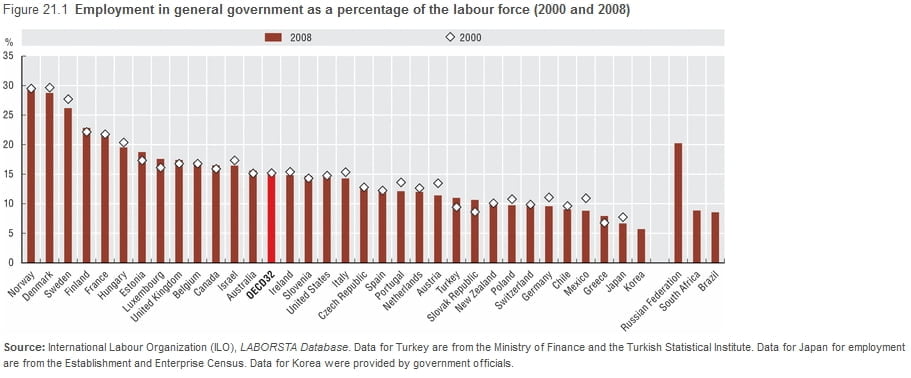
I own the “Operational Excellence Group” on LinkedIn with over 40,000 members worldwide, and enjoy a close relationship with the owner of the Lean Six-Sigma Group on LinkedIn with over 250,000 members worldwide. An analysis of the group memberships showed that; only 175 of 40,000 (0.43%) in the Operational Excellence Group, and only 2,039 of 250,000 (0.82%) in the Lean Six-Sigma Group, identified themselves as being in government. Given that government employs 15% of the workforce, a person might expect both of these numbers to be much higher.
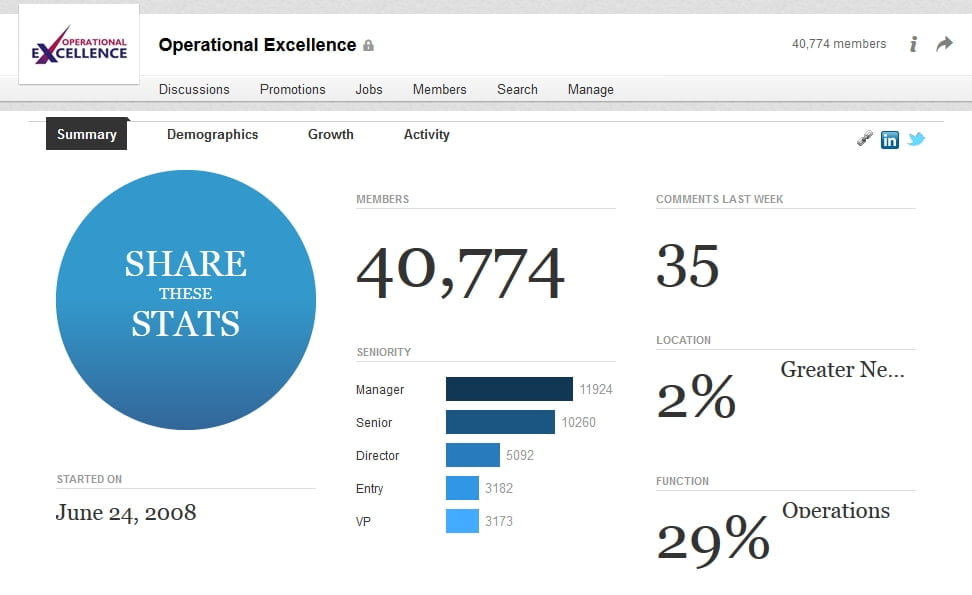
The United States Department of Labor’s (DoL’s) Bureau of Labor Statistics (BLS) released their February 2014 “Job Openings and Labor Turnover” (JOLT) Report on April 8th. It showed that for government in February the; i) total job openings were 393,000, ii) total hires were 300,000 and the total separations were 295,000. It is important to note that total separations include both voluntary (quit and retired) and involuntary (layoffs or terminated) separations.
A further analysis of the DLS’s JOLT report showed that involuntary separations (layoffs and terminations) in government was 0.4% of the workforce versus the private sector which had a 1.3% rate of involuntary separation. In other words, the government had 1/3rd the level of involuntary separation as compared to the private sector.
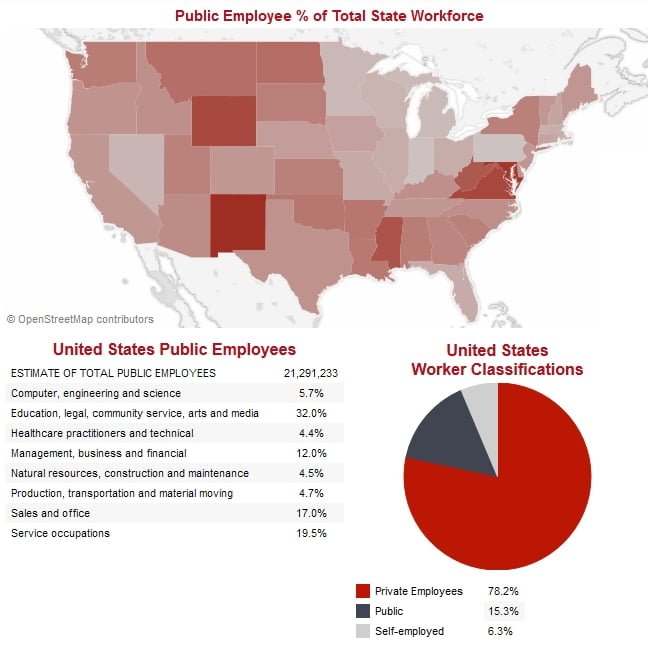 There is a great interactive map that shows Public Employment for the United States and break-downs by state at Governing.com.
There is a great interactive map that shows Public Employment for the United States and break-downs by state at Governing.com.
The five (5) states with the highest Public Employment percentage are: Alaska (27.3%), Arizona (24.1%), Maryland (23.0), Hawaii (22%) and Wyoming (21.4%).
And the five (5) states with the fewest Public Employees are: Pennsylvania (11.9%), Indiana (12.0%), Michigan (12.5%), Minnesota (12.6%) and Nevada (12.8%).
In December of 2012, the Society for Human Resource Management (SHRM) released an Executive Brief entitled “Examining Relationship Between Turnover (separation), Average Tenure, and HR Investments”. It showed that the average annual involuntary separation in government was 3% with an average tenure of 12 years versus the private sector’s average annual involuntary separation being 6% with an average tenure of 8 years.


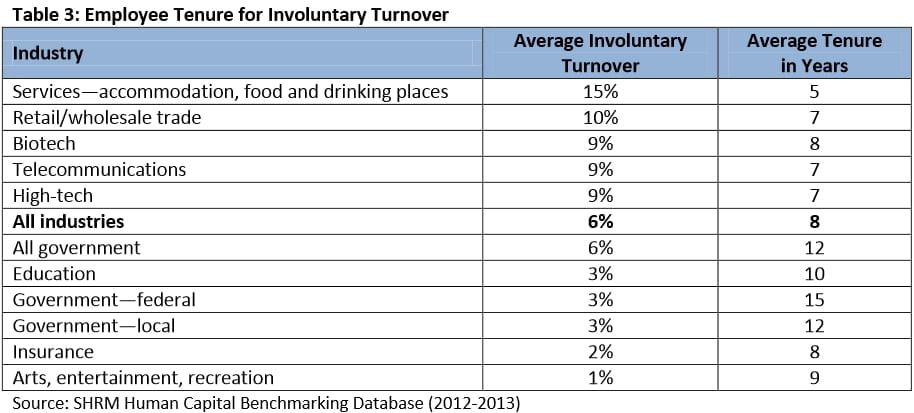
What might be inferred by all of this?
1) There is a lack of interest on the part of government as indicated by the percentage of persons in government who are members of groups dedicated to the disciplines of continuous improvement.
2) The number of people employed by government remains static to slight growth over time even as services are cut – generating less with more, instead of generating more with less.
3) The people who work in government must be stellar producers and entirely necessary as indicated by the fact that they work for the government far longer than those who work for private companies, and are involuntarily separated 2/3rds less than in the private sector.
When was the last time you heard of a government project coming in on-time, on-budget and meeting all of its objectives? Or when was the last time you heard glowing praise with respect to the performance in delivery of some government department or agency?
I know a lot of people who fill various roles in governments from around the world; from clerks, to foot-soldiers, to heads of departments, to national leaders – and each has a fiefdom that they command. I can tell their power by the size of their fiefdom, as determined by the budget that they control. And perhaps herein lies the greatest perversion of the system; people are rewarded for mediocrity.
If one person accomplishes almost all of their objectives for just a little over the amount they were budgeted, they are almost always rewarded in the form of their budget for the following year being increased so as to cover their needs. Whereas a person who accomplishes all of their objectives and comes in under-budget is penalized by having their budget reduced for the following year.
So the game that is played is as follows; a department head, seeing that they are under budget, will ask everyone under them to develop a “wish-list” so that the monies can be spent (read: “wasted”) for the sole purpose of preserving their budget for the following year (plus the annual upwards adjustments for inflation). Improvements and efficiencies are not prioritized.
Government acts as a community. The individual members of the community have a shared commitment and affinity to its core values, beliefs, and traditions. As such, the members will behave in a predictable manner since there is nothing to gain by any individual changing their position unilaterally – to disturb this predictability never even crosses the mind of the members.
In essence, a Nash Equilibrium exists; named after John Forbes Nash, who proposed it (and became a Nobel Laureate because of it). A Nash Equilibrium summarily states that each member of a community is supposed to know the natural objectives of the other members of the community, and no member is able to gain by deviating from a predicted behavior on their own. If all the members of a community share these common beliefs and no member of the community can gain an advantage by changing their behavior while the other members continue on as they always have, then the existing state perpetuates and constitutes a Nash Equilibrium.
As such, the equilibrium that exists in a community will not be disrupted by a threat originating from within the community – but rather a disruption that is introduced to the community from the outside. For a disruptor to be transformational, it needs to possess the power to destroy the community (but not necessarily having to use that power). Without possessing this destructive power, the community will rally and unite to repel the disruptor – thus preserving the community.
For example; according to an article in Forbes by Kellen Giuda in September of 2012 entitled “Lean Government Six Sigma? Why Do Politicians Ignore It?”, the United States Army and Navy began a Six-Sigma program in 2005-2006. Through 2008, the combined benefit realized was $2.45 Billion. The 2010 budgets for the Army was $244.9 Billion and the Navy was $149.9 Billion (excluding special funding for engagements and conflicts) for a total of $394.8 Billion. As such, one can deduce the net annual benefit of the Six-Sigma initiatives was approximately $0.8 Billion) (or 0.2%) per year over the three (3) year period 2006-2008. While any savings are a step in the right direction and the raw dollars are significant, the program can hardly be considered a success.
Certainly, there are a magnitude of processes and procedures that are generations old yet frozen in time and left unchallenged that deserve a complete end-to-end re-engineering – and there are expenditures that can be optimized, but don’t change due to the politics involved (such as killing unnecessary or unwanted bases and programs). But for real change to occur is to challenge and overcome that which is sacrosanct.
And I just selected the Department of Defense because it is easy to get budget figures for the example – but such waste exists everywhere in government. With overlapping (often competing) law enforcement agencies, to environmental, natural resources, and social programs – the opportunities for improvement (more benefit/value realized at less cost) abound.
In the end, government might spin-up the rhetoric about improvement initiatives to placate the plebiscites. But until a credible external disruptor is introduced (most likely fiscal calamity or some competitive threat), not much will change in either behavior or efficiencies – certainly nothing near the potential.
Each and every one of us has a need, as does each and every company or government. And it is obvious that there is a desperate need in government for Continuous Improvement (in all of its flavors and forms), and for governments to recognize and pursue the potential. But alas, they lack the want – a real want.
And without the want, the desire, the compelling reason – nothing changes.
By Joseph F Paris Jr
 Paris is the Founder and Chairman of the XONITEK Group of Companies; an international management consultancy firm specializing in all disciplines related to Operational Excellence, the continuous and deliberate improvement of company performance AND the circumstances of those who work there – to pursue “Operational Excellence by Design” and not by coincidence.
Paris is the Founder and Chairman of the XONITEK Group of Companies; an international management consultancy firm specializing in all disciplines related to Operational Excellence, the continuous and deliberate improvement of company performance AND the circumstances of those who work there – to pursue “Operational Excellence by Design” and not by coincidence.
He is also the Founder of the Operational Excellence Society, with hundreds of members and several Chapters located around the world, as well as the Owner of the Operational Excellence Group on Linked-In, with over 38,000 members.
Connect with him on LinkedIn

